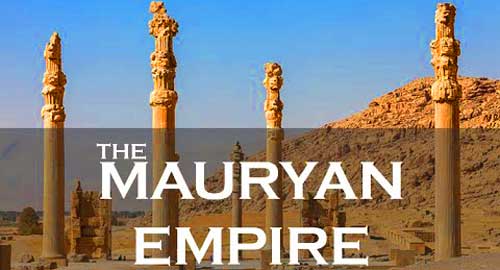- Home
- Indian Dynasties
- Mauryan Empire
Mauryan Empire
Updated on 19-09-2022
Mauryan Empire: 322B.C.-185 B.C.
Quick Facts:
Dynasty: Mauryan Empire
Founder: Chandragupta Maurya
Ruled From 322 B.C.-185 B.C.
Capital: Pataliputra
Important Religion: Buddhism, Jainism and Hinduism
Important Rulers: Chandragupta Maurya (322-297 BC) Bindusara (297-272 BC), Ashoka (268-232 BC)
Preceded by: Nanda Empire
Succeeded by: Shunga Empire
One of the most important and significant dynasties that existed before Christ is the Mauryan Empire. The last Nanda ruler Dhana Nanda was arrogant and unpopular due to his strict tax rules. Chandragupta Maurya with the help of Chanakya defeated the Nanda Dynasty and founded the Mauryan Empire in 322 BC. The Mauryan Empire was founded by Chandragupta Maurya.
The empire ruled most of ancient India from 322 BC to 185 BC. The capital of the Mauryan Empire was the Pataliputra (now Patna) in India. The three important rulers of Mauryan Empire are Chandragupta Maurya (founder ruled from 321-297 BC), his son Bindusara ruled from 297 to 272 BC and Ashoka ruled from 268 to 232 BC.
Chandragupta with the help of Chanakya raised an army and defeated the Nanda empire in 322 BC. With the vacuum being created by Alexander the Great, Chandragupta Maurya started expanding his kingdom rapidly towards central and western India. Much of the success of Chandragupta has been credited to Chanakya who was the author of Arthasashtra. By the end of his reign Chandragupta Maurya had extended his supremacy in most parts of Northern India.
His son Bindusara further extended the empire in the Deccan region of India.
Chandragupta’s grandson Ashoka ruled from 268 to 232 BC. He further expanded the Mauryan Empire by conquering Kalinga. After the great Kalinga war, Ashoka embraced Buddhism and started preaching Buddhist principles.
After the death of Ashoka, the empire started to decline as there was no proper ruler. The last ruler Brihadratha was killed in 185 BC by Pushyamitra who later founded the Shunga dynasty.
Timeline of Mauryan Empire
- Chandragupta Maurya, Founder 322-297 BC
- Bindusara (son of Chandragupta) 297-273BC
- Ashoka (grandson of Chandragupta) 268-232 BC
- Dasharatha Maurya (grandson of Ashoka) 232-224 BC
- Samprati 224-215 BC
- Shalishuka 215-202 BC
- Devavarman 202-195 BC
- Satadhanvan 195-187 BC
- Brihadratha187-184 BC
History of Mauryan Empire
Chandragupta Maurya founded the Mauryan Empire after overthrowing the Nanda Dynasty. The Nanda dynasty was a very vast dynasty which ruled the northern part of India during the 4th century BCE and probably 5th century BCE as well. Chandragupta Maurya with the help of Chankya defeated the Nanda dynasty and started the Mauryan Empire.
Earlier Chankya was working as a minister in the Nanda dynasty. He was insulted by Dhana Nanda (who was the last ruler of the Nanda dynasty). Chanakya swore and took a vow to topple the Nanda Dynasty. Later Chankya went to Taxila and worked as a teacher. He met Chandragupta Maurya and was very impressed by his royal qualities
Also, with the death of Alexander the Great in Babylon in 323 BC, Chanakya and Chandragupta Maurya took advantage of the time and overpowered the Nanda Empire. Thus, Mauryan was established.
Important Rulers
Selecus I Nector who was the successor of Alexander the Great fought very hard to defend the territories. The result led to war known as Seleucid- Mauryan war. This war was fought to take back the Indian satrapies which were conquered by Chandragupta Maurya.
The war ended with a settlement between the two rulers with Chandragupta Maurya annexing the eastern satraps. It is further believed that a marriage alliance was also formed with Chandragupta Maurya marrying a daughter of Seleucus.
Chandragupta Maurya was the founder of Maurya Empire. He ruled from 324 BCE to 293 BCE. He was a very strong ruler and expanded his kingdom to the whole of North India. He along with the advice and help of Chanakya built a massive army and continued his expansion of the kingdom till he renounced, and his son Bindusara was made the king. Chandragupta followed his Jain teacher Bhadrabahu.
It is believed that he lived a life of an ascetic for many years and died in Shravanabelagola before fasting to death according to Jain practice called Sallekhana.
Bindusara or Bindusara Maurya was the second Mauryan Emperor and also son of Chandragupta Maurya. He ruled from 297-273 BCE. He was succeeded by his son Ashoka. Bindusara further expanded and conquered many territories in North and South India.
Cholas, Pandyas and Cheras had good relations with Bindusara and hence he did not conquer these states. Apart from these states, Kalinga was the only state which did not become part of the Mauryan Empire. However, it was conquered by his son Ashoka. Chanakya continued to advise Bindusara.
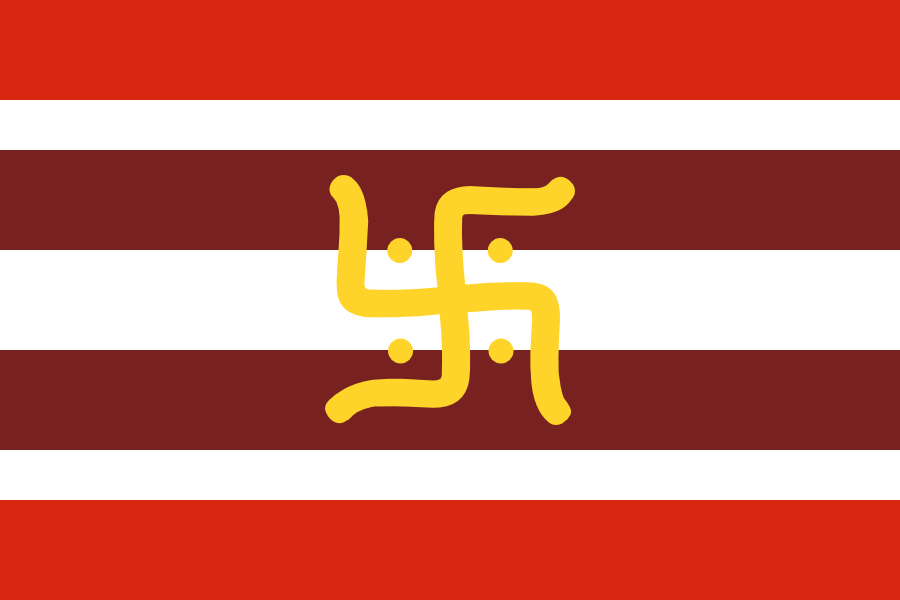
Like his father, even Bindusara maintained good cordial relations with foreign rulers. During his rule Chanakya helped Bindusara to conquer sixteen kingdoms and became a strong ruler between territories of western and eastern oceans.
During his rule, the people of Taxila were revoked twice. The people of Taxila revolted for the misdeeds of the wicked officers whom Susima failed to suppress. The reason for other revolt is not known.
There is no clear information on the death of Bindusara. According to the historical evidence he died in 270 BCE. But some believe that he died between 270 BCE to 274 BCE. After his death his son Ashoka took over and ruled from 268 to 232 BCE.
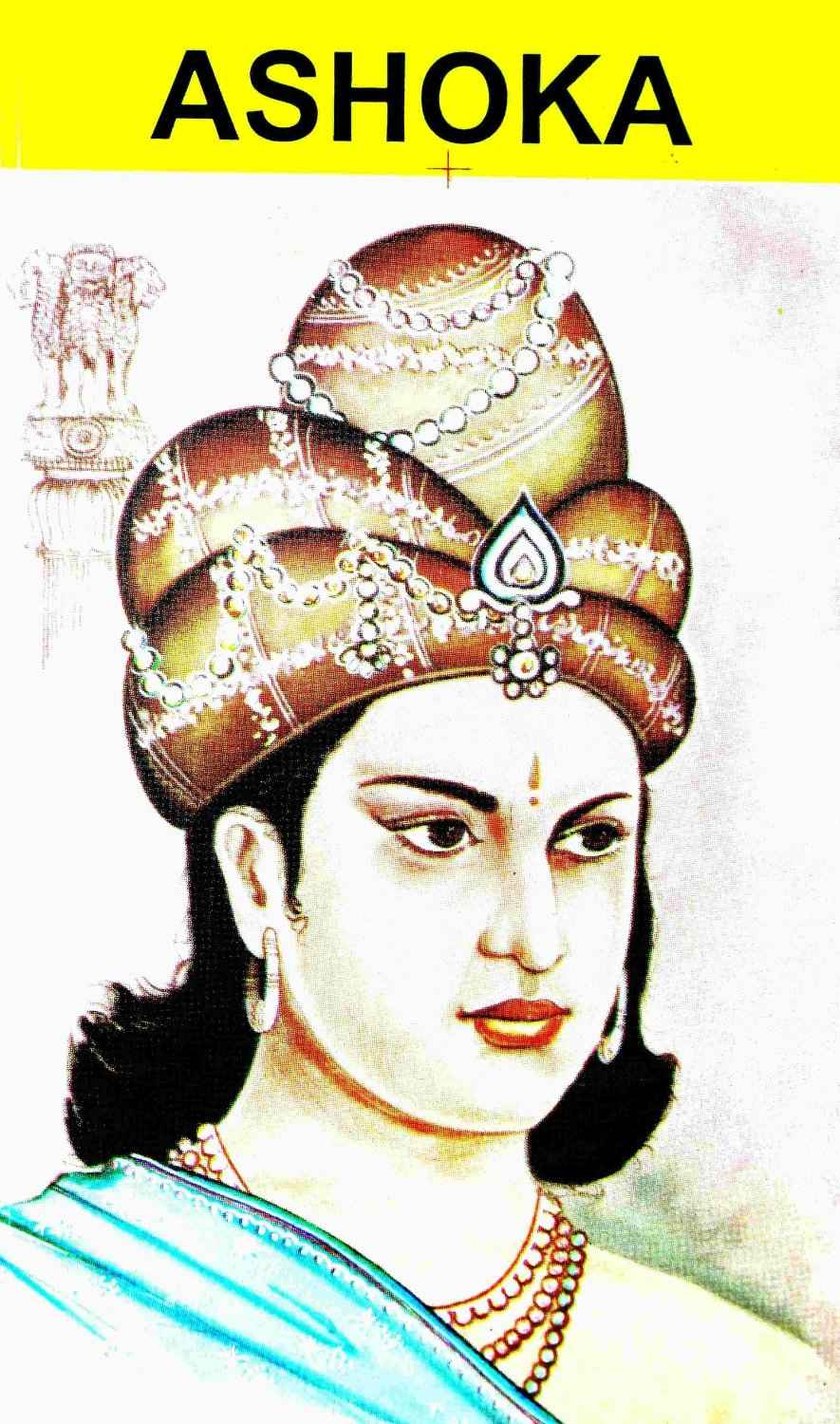
Ashoka also spelled as Asoka was the grandson of Chandragupta Maurya and also the last major emperor of the Mauryan Empire. He ruled the Indian subcontinent from 268 to 232 BCE. Before assuming the charge of King, Ashoka was an excellent prince. He crushed the revolts in Ujjain and Takshashila.
He was a highly aggressive and ambitious ruler. His ambition led to the Kalinga war. The war ended in 261 BCE. But the bloodshed and large number of deaths made Ashoka renounce the arms and embraced Buddhism. He started traveling to different parts of the country and around the world preaching the principles of Buddhism. He also sent missionaries to travel Asia and spread Buddhism.
After 261 BCE, Ashoka ruled the kingdom with peace and harmony for around 40 years. Ashoka’s inscription suggests that he devoted the rest of his life to the spread of Dhamma. Ashoka erected various stupas, monasteries, viharas and pillars. These are present even to this day at various places in India.
Asoka died in 232 BCE. Thus, also came the decline of the Mauryan Empire.
Administration during Mauryan Period
The Mauryan administrative system was very efficient and monarchical. King was the supreme power. He was considered as next to God. King appointed a council of ministers for his assistance. King established a well-planned system of supervision and inspection. The council of ministers was known as Mantriparishad. The ministers were divided into several departments. The list is given below:
- Akahalapadhyksha( Accountant)
- Samsta( Trade routes)
- Surdhyaksha( exercise )
- Sitadhyaksha( Agriculture)
- Lanvanadhyksha(salt)
- Sulkadhyaksha( collector of customs)
All these were directly under the control of the King.
The whole empire was divided into five major centres with Pataliputra being the capital. The provincial centres which are mentioned in the Ashokan inscriptions are Ujjain, Tosali, Suvarnagiri and Taxila.
The head for all these provinces was the Royal Prince known as kumara. These provinces were closely examined and selected for the following reasons. Taxila and Ujjain were situated on long distance trading routes.
This helped in improving the trade and also to keep a check on the miscreants. Suvarnagiri (Golden mountains) which in the Karnataka state could be due to the gold mines
Mauryan had coin systems. These coins were usually made of silver or copper. These coins were used for trade and commerce.
Military System
The Mauryan had a very well-planned military organisation. Meghasthenes mentions that a committee of six boards of five members each was formed. Of these are
- Navy–
- Military transport– Who took care of transport and provisions
- Infantry- who was responsible for foot soldiers.
- Cavalry- soldiers who mounted on horseback.
- Chariot Division
- Elephants
The empire had around 600,000 infantry, 30,000 cavalry, 8,000 chariots and 9,000 war elephants. Large number of spies (espionage) were appointed to collect information for both internal and external security reasons.
Local Government:
Arthashastra and Meghasthanese describe the locals formed by the Mauryan Empire. A city council was divided into six committees. These committees had their set of duties like the first committee was taking care of fixing wages and took care of goods.
The second committee used to take care of foreign dignitaries, tourists and businessmen. The third committee-maintained records and registrations.
The fourth took care of manufactured goods and sale of commodities. The Fifth committee issued a licence, regulated trade and also checked the weights and measurements for fair trade. The sixth committee collected sales taxes.
The smallest unit of administration was the village, and the official head of the village was Gramika. The city council appointed some officers to take on public welfare like the roads, public buildings, markets, hospitals, water and educational institutions.
Economy during Mauryan Empire
The economy during the Mauryan Empire flourished. Industry, trade and commerce, revenue collection was very good. Agriculture was the main source of income. The Mauryan established a centralised government to the economic progress of the country. Rice, pluses, vegetables, fruits, and spices were also produced.
The state had agricultural farms, cattle farms and dairy. Water for irrigation was distributed. The famous inscription done by Rudradaman at Junagarh mentions that Chandragupta’s governor Pushyagupta was responsible for building a dam on Sudarshanalake near Girnar.
The other important occupation was trade. The main export was different spices, pearls, diamonds, cotton textile, Ivory works, conch shells etc. The main important trades were horse, gold, linen, etc. Trading was an important source of revenue which became a major revenue earner in the post Mauryan period.
Trade was organised in merchant guilds called as Sangha’s and Srenis. The percentage of profit to merchants was fixed and excess profits went to the treasury. The commodities manufactured in our country were stamped, showing at which place the goods were manufactured and import goods were stamped at the toll gate.
Trade routes were main highways or navigable rivers. Sea trade was conducted both to the west and with the northern coast of Burma. Another important economy was crafts and industries. Textile workers were given due importance during Chanakya’s period. This is mentioned in his book. Cotton fabrics were made at Madhura, Aparntha, kalinga, Kashmir, Vanga, Mahisa.
The use of money became quite popular during the Mauryan period. Money was not only used for trade, but also government officers were paid in cash. Silver punched coins which carried symbols of peacock formed the imperial currency of the Mauryan Empire.
Brahmins, children and handicapped were exempted from paying taxes. Tax evasion was considered as a serious offence and offenders were seriously punished. Farmers were exempted from tax.
Chandragupta Maurya maintained a single currency throughout India. This helped while doing trade and also for exchange of goods. He had appointed many regional governors and administrators to provide justice to traders, farmers and merchants.
Religions during Mauryan Period
The Mauryan Empire was extremely successful by ruling for many decades. The exceptional administration policies, economy, meticulous planning and showing great attention to their subjects were some of the few paths for such huge success.
Mauryan dynasty rulers were God fearing and followed and respected all the religions. The important religions that were there during this period were Jainism, Buddhism and Hinduism. The minor religious sect like Ajivikas also received great importance.
Jainism: Chandragupta Maurya after renouncing the throne became an ardent follower of Jainism. He was a disciple of Acharya Bhadrabahu. It is believed that Chandragupta Maurya embraced samlehna or santhara (fast unto death) at Shravanabelagola in Karnataka.
However, his son Bindusara distanced himself from both Jainism and Buddhism and kept the Hindu traditions alive. Samprati who was the grandson of Ashoka also embraced Jainism. Samprati was influenced by the teachings of Jain monk Arya Suhasti Suri.
It is believed Samprati has built around 125,000 Jain temples across India. Some of them are still found in the towns of Ahmedabad, Ujjain, Palitana and Viramgam. But no research has been done so far with this regard. Chandragupta and Samprati are credited for the spread of Jainism and Jain principles across different parts of India and outside India.
After the Kalinga War, Ashoka embraced Buddhism however he was initially practising Brahminism. After embracing Buddhism, Ashoka renounced expanding his kingdom. He also renounced the harsher measure mentioned in Arthashastra to collect taxes and against the rebels.
Ashoka sent a mission led by his son and daughter to Sri Lanka whose king followed Buddhists principles. Ashoka dedicated his whole life to the spread of Buddhism across India and outside India.
He built close to 84,000 stupas across India such as Sanchi stupa, Mahabodhi temple in Bihar. Many Indian merchants got influenced by Ashoka and embraced Buddhism. They played an important role in spreading Buddhism
Art and Architecture
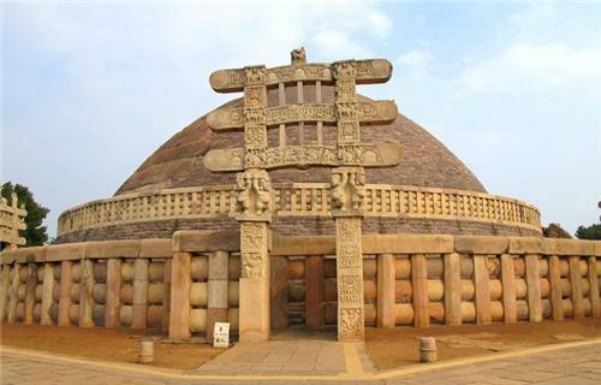
Mauryan art can be divided into court art and popular art. Court art included pillars, palaces and stupas while the popular art included caves, pottery, stone piece works and works by terracotta. One of the most important characteristics of Mauryan art and architecture is the Mauryan Polish. It gives a smooth and shiny finish to the stone material. It can be found in Ashoka Pillars. Some of the different artwork of Mauryan art are
The Mauryan art included Stupas, Viharas, Palaces, Pottery, Pillars, Caves and sculptures. The pillars of the Mauryan period were quite different to the Achamenian empire. The Mauryan pillars are rock cut pillars which display the carver’s skill.
The Achamenian pillars were constructed in pieces by a mason. The Mauryan pillar found in Sarnath which is popularly known as Lion Capital is one of the best examples of Mauryan art. It is the national emblem of India.
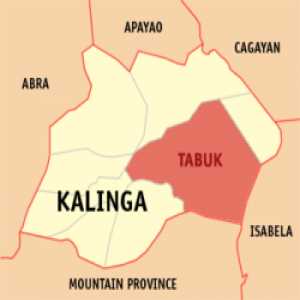
Causes for Decline
Decline in Mauryan Empire:
After Ashoka’s death no big successor came to rule. The main reason for decline is weak successors, foreign invasions, independence of the provinces, internal revolt led to the decline of Mauryan Empire. Emergence of new kingdoms like Kushan Dyansty and many more also led to the decline.
Update on coronavirus in India
Affiliate Disclosure:
If you make any purchase via a link on this site, I may receive a small commission with no added cost to you.
